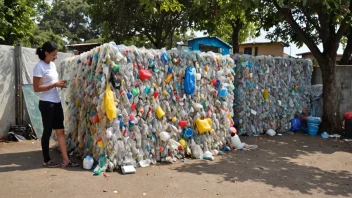As environmental challenges escalate globally, the quest for sustainable solutions has led to a significant interest in biodegradable materials. These materials, which can decompose naturally, offer a promising alternative to traditional plastics and other non-biodegradable substances that contribute to pollution and waste. This article delves into the potential of biodegradable materials, exploring their types, benefits, applications, and the challenges they face, while also examining how individuals can contribute to a more sustainable future.
Understanding Biodegradable Materials
Biodegradable materials are substances that can be broken down by microorganisms into natural elements within a reasonable timeframe after disposal. Unlike conventional plastics that can take hundreds of years to decompose, biodegradable materials can often break down within months to a few years, depending on environmental conditions.
Types of Biodegradable Materials
Biodegradable materials can be categorized into several types, primarily based on their source and composition:
- Natural Biodegradable Materials: These include organic materials such as paper, food waste, and plant-based substances. They decompose naturally and can enrich the soil.
- Synthetic Biodegradable Materials: These are man-made materials designed to break down more quickly than traditional plastics. Examples include polylactic acid (PLA) and polyhydroxyalkanoates (PHA).
- Compostable Materials: A subset of biodegradable materials, compostable items can decompose in a composting environment, turning into nutrient-rich compost. They require specific conditions to break down effectively.
Benefits of Biodegradable Materials
The adoption of biodegradable materials carries numerous advantages that can significantly impact environmental preservation and sustainability:
1. Reduced Plastic Pollution
One of the most pressing issues of our time is plastic pollution. Biodegradable materials can help alleviate this problem by breaking down more quickly and reducing the volume of waste that accumulates in landfills and oceans.
2. Lower Carbon Footprint
Many biodegradable materials are derived from renewable resources, which can lead to a lower carbon footprint compared to fossil fuel-based plastics. This shift can contribute to reducing greenhouse gas emissions and combating climate change.
3. Soil Health Improvement
When biodegradable materials decompose, they can enhance soil health by providing organic matter and nutrients, supporting plant growth, and fostering a thriving ecosystem.
4. Enhanced Consumer Awareness
The increasing popularity of biodegradable materials raises awareness about environmental issues and encourages consumers to make more sustainable choices in their daily lives.
Applications of Biodegradable Materials
Biodegradable materials are being utilized across various sectors, showcasing their versatility and potential for positive impact:
1. Packaging
With the rise of e-commerce and single-use packaging, biodegradable options are becoming increasingly popular. Companies are adopting biodegradable materials for packaging products, reducing plastic waste significantly.
2. Agriculture
Biodegradable films and mulches are being used in agriculture to enhance crop growth while minimizing plastic pollution in soil. Once the growing season is over, these materials break down, enriching the soil.
3. Textiles
Innovations in biodegradable textiles are emerging, with fibers made from natural sources such as cotton, hemp, and bamboo. These biodegradable fabrics offer a sustainable alternative to fast fashion.
4. Medical Applications
In the medical field, biodegradable materials are used for sutures, drug delivery systems, and implants, which can reduce the need for surgical removal and minimize waste.
Challenges Facing Biodegradable Materials
Despite their benefits, biodegradable materials face several challenges that hinder their widespread adoption:
1. Misconceptions and Lack of Awareness
Many consumers are unaware of the differences between biodegradable and non-biodegradable products, leading to misconceptions about their disposal and environmental impact.
2. Industrial Composting Requirements
While some biodegradable materials can decompose in industrial composting facilities, they may not break down effectively in home compost heaps or landfills, limiting their environmental benefits.
3. Cost and Availability
Biodegradable materials can often be more expensive than traditional plastics, which may deter businesses from making the switch, especially in cost-sensitive industries.
4. Regulatory Challenges
Regulations surrounding biodegradable materials can vary by region, and a lack of standardized definitions can complicate the market and consumer choices.
How Individuals Can Get Involved
Individuals play a crucial role in promoting the use of biodegradable materials and fostering a more sustainable environment. Here are some ways to get involved:
1. Educate Yourself and Others
Understanding the importance of biodegradable materials and their environmental impact is the first step. Share this knowledge with friends, family, and your community to raise awareness.
2. Make Sustainable Choices
Opt for biodegradable products when shopping, such as bags, utensils, and packaging. Support businesses that prioritize sustainability and use biodegradable materials in their operations.
3. Advocate for Policy Change
Engage in advocacy efforts to support policies that promote the use of biodegradable materials and reduce plastic waste. This can include signing petitions, contacting local representatives, or participating in community initiatives.
4. Participate in Local Clean-Up Efforts
Join local clean-up events in your community to help reduce litter and plastic pollution. This hands-on approach can have a direct impact and inspire others to take action.
Conclusion
Biodegradable materials present a viable path toward addressing the pressing environmental challenges we face today. By understanding their potential, supporting their use, and advocating for sustainable practices, individuals can contribute to a healthier planet. As we explore the possibilities of biodegradable materials, it is essential to remain informed, engaged, and proactive in our efforts to foster a more sustainable and just world for future generations.






